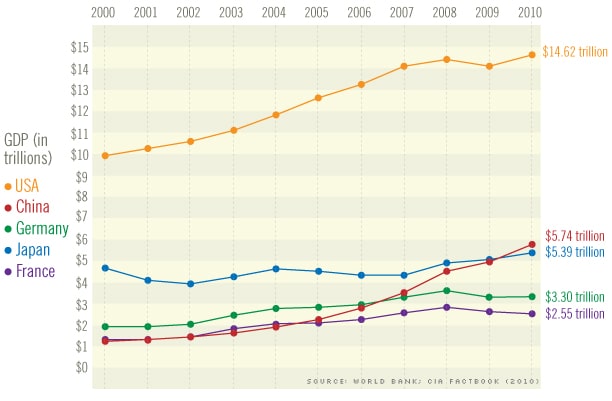“The first analyst data evaluating China’s smartphone industry in Q1 2012 is out, with Apple reported to have more than doubled its market share, according data from Woori Investment and Securities, reported by Yonhap,” Jon Russell reports for TNW.
“Woori’s report concludes that Apple’s sales between January and March 2012 hit 6.2 million devices, up from 2.1 million units the previous quarter,” Russell reports. “This increase of almost 200 percent is said to have seen Apple’s market share shoot up from 8 percent to 19 percent, thanks to the launch of the iPhone 4S, which was introduced amidst chaotic scenes in January.”
Russell reports, “The report notes that impressive sales of the new smartphone — which is being offered by two telecom operators for the first time — still leave Apple significantly behind Samsung, after the Korean giant’s quarterly sales hit 9 million, up from 6.7 million at the end of 2011. Those figures, Woori estimates, would extend Samsung’s market share to 28 percent (up 4 percent).”
Read more in the full article here.
[Thanks to MacDailyNews Reader “Dan K.” for the heads up.]

Just wait till the numbers start coming in when China Mobile starts selling iPhone. 19% achieved over limited time with #2 and #3 operators. Cant wait for the shock waves to make it up and down wall st when rev & earnings start to reflect #1 operator.
I read that China Mobile need the iPhone 5 chips for it’s existing cell tower system. This is great because it will pull in the version refresh date and when China Mobile starts selling the iPhone, there could be another 200% or more jump in China market share!
What about that report about a Microsoft exec saying that they were outselling iPhones in China, recently. He said they were at 9% compared to Apple’s 8%. I guess now he has to compare it to Apple’s 19%. Oh well.
Just a rounding error ;^)
Woori Securities, being in South Korea, simply can’t be trusted when announcing smart phone data. Samsung refuses to release official sales data and instead relies on a global network of “independent” analysts as dubious surrogates. Estimates favorable to Samsing are reported as fact by friendly media outlets and repeated endlessly around the web. BS from start to finish.
Just got back after a 3-week trip to Korea and China and I certainly paid attention to the phones being used. As expected, Samsung is totally dominant in Korea but the iPhone is a distant yet strong number two. The Koreans like the big screens (even small young women use the 5.3″ Note without any problems) for their daily commutes on foot and in subway trains and buses. The iPhone is certainly popular – especially the younger generation women in their 20’s and 30’s. I’d say nearly 70% of the iPhones I saw in Seoul were being used by women.
The iPhone was quite noticeable in China. I was mainly in the Xiamen/Zhangzhou area in southeast coast of China across from Taiwan. The iPhone becomes more visible when you get into the swankier districts of the cities where there are Western-style shopping malls and restaurants. I’d imagine that iPhones would be too expensive for most blue-collar workers. At the factories I visited, virtually all of the workers during their lunch break were fiddling with cheaper and smaller smartphones or dumb feature phones.
I think it’d be really hard to get a clear picture of China in terms of market share and things like that. Things are very opaque over there and it’s an unimaginably huge country population-wise. To give you a perspective, the population of China equals that of *TWO* United States and *ALL* of Europe combined. Although the great majority of the population would be too poor to afford an iPhone soon, the middle class is certainly growing fast. You have to do a different kind of math there. Things in the Far East just aren’t like in the US or America at all.
This being said, the Far East is also the largest economy in the world when you combine the GDP’s of China, Japan and South Korea. It’s still fast-growing as well when you consider the lousy economic conditions in the US and especially Europe. You can just feel the economic vitality and the energy of the region when you go there. People also seem very interested in Apple products but a lot of them are still cautious because Windows is so entrenched. Still, I have converted several people from their typical Windows/Android (Lenovo/HTC) to go all-Apple after I demo my MBA/iPad/iPhone rig working seamlessly together with iCloud. They see that and go, “Whoa! I really need to get that!” Doing my part to spread the Apple gospel wherever I go…
Even with a large population, it is only necessary to sample a small number of people (assuming they’re randomly chosen) to get a good idea about national trends.
“The Far East is also the largest economy in the world when you combine the GDP’s of China, Japan and South Korea.”
This is not accurate. Combined, the GDP of those three countries is perhaps $3 trillion less than that of the USA.
Oops … I forgot to provide a source.

Well, if you go by PPP (purchasing power parity), which is considered more accurate, the three nations’ combined GDP is significantly bigger than that of the US or EU.
http://en.wikipedia.org/wiki/List_of_countries_by_GDP_(PPP)